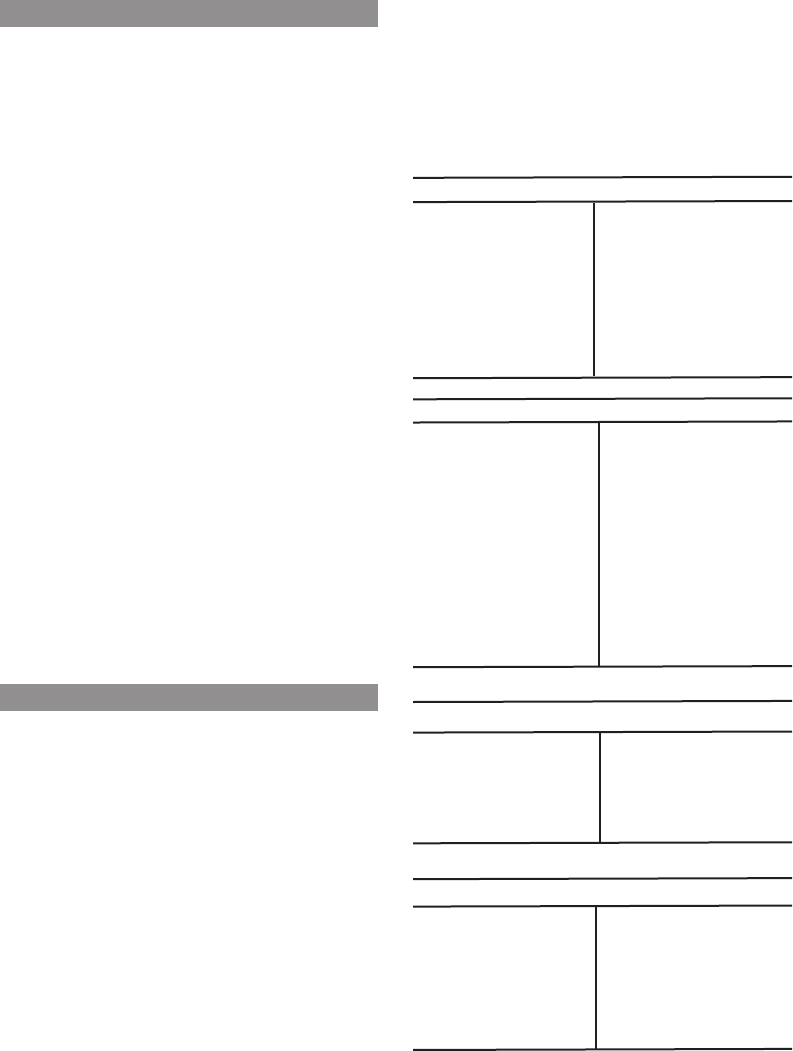
31
SPECIAL CUTS
NEVER MAKE ANY CUTS UNLESS THE MATERIAL IS
SECURED ON THE TABLE AND AGAINST THE FENCE.
Aluminum Cutting (Carbide tipped blade only)
Aluminum extrusions such as those used when making
aluminum screens and storm windows can easily be cut
with your saw using the proper blade designed for non-fer-
rous metal cutting. Position the material so that you will be
cutting the thinnest cross section, as shown in Figure 9.
Figure 10illustrates the wrong way to cut these extrusions.
Use a wax lubricant when cutting aluminum such as
Johnson’s Stick Wax No.140. Apply the stick wax directly
to the saw blade before cutting. Never apply stick wax to
a moving blade.
The wax, available at most hardware stores and industrial
mill supply houses, provides proper lubrication and keeps
chips from adhering to the blade.
Be sure to properly secure work. Certain workpieces, due
to their size, shape or surface finish, may require the use of
a clamp, jig or fixture to prevent movement during the cut.
Bowed Material
When cutting bowed material always position it as shown
in Figure 11 and never like that shown in Figure 12.
Positioning the material incorrectly will cause it to pinch the
blade near the completion of the cut.
Cutting Plastic Pipe and other round cross-sectional
material
Plastic pipe can be easily cut with your saw. It should be
cut just like wood and clamped or held firmly to the fence
to keep it from rolling particularly when making angle cuts.
MAINTENANCE
(PERFORM ALL MAINTENANCE WITH MITER SAW
UNPLUGGED.)
1. All bearings are sealed. They are lubricated for life and
need no further maintenance.
2. Periodically clean all dust and wood chips from around
AND UNDER the base and the rotary table. Even
though slots are provided to allow debris to pass
through, some dust will accumulate.
3. The brushes are designed to give you several years
of use. If they ever need replacement follow the
instructions in this manual or return the tool to the
nearest service center for repair.
Important
To assure product SAFETY and RELIABILITY, repairs,
maintenance and adjustment (including brush inspection
and replacement) should be performed by authorized
service centers or other qualified service organizations,
always using identical replacement parts.
Trouble Shooting Guide
BE SURE TO FOLLOW SAFETY RULES AND
INSTRUCTIONS
TROUBLE! SAW WILL NOT START
WHAT’S WRONG? WHAT TO DO…
1. Saw not plugged in 1. Plug in saw
2. Fuse blown or circuit 2. Replace fuse or reset
breaker tripped circuit breaker
3. Cord damaged 3. Have cord replaced by
authorized service center
4. Brushes worn out 4. See “Brushes” in this
manual
TROUBLE! SAW MAKES UNSATISFACTORY CUTS
WHAT’S WRONG? WHAT TO DO…
1. Dull blade 1. Replace blade
2. Blade mounted 2. Turn blade around
backwards
3. Gum or pitch on blade 3. Remove blade and
clean with turpentine
and coarse steel wool
or household oven
cleaner
4. Incorrect blade for work 4. Change the blade
being done
TROUBLE! BLADE DOES NOT COME UP TO SPEED
WHAT’S WRONG? WHAT TO DO…
1. Extension cord too light 1. Replace with adequate
or too long size cord
2. Low house current 2. Contact your electric
company
TROUBLE! MACHINE VIBRATES EXCESSIVELY
WHAT’S WRONG? WHAT TO DO…
1. Saw not mounted 1. Tighten all mounting
securely hardware
2. Stand or bench on 2. Reposition on flat level
uneven floor surface
3. Damaged saw blade 3. Replace blade


















